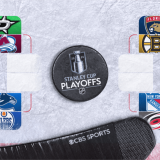The 2018 NHL offseason has already been quite busy. The Stanley Cup champions not only lost their coach and traded a defenseman and a goalie but promoted a former assistant to replace Barry Trotz 48 hours before the start of the signing period. Willie O'Ree finally joined the Hockey Hall of Fame. And the Pittsburgh Penguins dealt one of their young forwards to the draft's big winner, the rebuilding Buffalo Sabres.
The real action, though, begins with the start of free agency.
Lucky for you, we've got you covered right here with all the key things to know ahead of this year's signing period:
What is free agency?
An important first question. To put it simply, free agency is the time when players whose contracts have expired are free to negotiate and sign with any of the NHL's 31 teams. (So that's where the word "free" comes from!) Although trades can be made beforehand, this time is also popular for deals between teams, especially since decisions regarding unsigned players or players with soon-to-be-expiring contracts can influence trade talks.
So, in a nutshell: Lots of players signing contracts and being traded! (Or, alternatively, the best part about managing rosters on EA Sports' "NHL 19.")
When does free agency start?
This year's free agency period officially begins on Sunday, July 1, at 12 p.m. (noon) Eastern.
What's the difference between UFAs and RFAs?
Unrestricted free agents (UFAs) and restricted free agents (RFAs) are both part of free agency. Here are some quick definitions:
UFAs: Players who have expiring contracts and are at least 27 years old and/or have at least seven years of NHL service, they are free to negotiate and sign with any NHL team.*
RFAs: Players who don't qualify as UFAs but are no longer on an entry-level contract**, they can become UFAs if their original team does not extend a qualifying offer or they reject a qualifying offer, but their original team can still choose to match any contract offer made by another team and retain them under those terms.
In simpler terms, the UFAs are the ones with no limitations on the open market. The RFAs are obviously younger and can still be had, but there is risk involved in pursuing them, as original teams are entitled to draft-pick compensation if they lose them.
*Note: Any player who is at least 22 years old and was not selected in an NHL Entry Draft is also considered an UFA.
**Note: Anyone starting their NHL career at the ages of 18-21 is required to receive a three-year entry-level contract. Anyone starting at ages 22-23 must sign a two-year entry-level contract. And anyone at age 24 must sign a one-year entry-level contract.
Who are the top 2018 free agents?
Feel free to scan our list of top 10 free agents and stay tuned to our 30-player free-agent tracker, but here are a couple of the biggest names set to become available:
- F John Tavares, New York Islanders
- F James van Riemsdyk, Toronto Maple Leafs
- F Paul Stastny, Winnipeg Jets
- F James Neal, Vegas Golden Knights
- D Mike Green, Detroit Red Wings
- F Rick Nash, Boston Bruins
- F Joe Thornton, San Jose Sharks
Which teams are expected to be active?
As the Penguins' recent trade of Conor Sheary evidenced, we could be in for some more NBA-style deals where teams open salary-cap space by agreeing to seemingly lopsided swaps. That said, entering free agency, here's a rundown of some of the top clubs in terms of projected money to spend, per CapFriendly:
- New York Islanders (projected cap space: $32.7M)
- Vegas Golden Knights ($30.9M)
- New York Rangers ($29.4M)
- Toronto Maple Leafs ($24.6M)
- Calgary Flames ($24.4M)
For reference, here are some of the teams with the least amount of projected cap space: Los Angeles Kings ($3.2M), Tampa Bay Lightning ($5.3M), Pittsburgh Penguins ($8.1M).
When does free agency end?
As our NBA colleagues would say: Never! Anyone who remains unsigned into the 2018-19 season can still be acquired at any time, much like Jaromir Jagr was by the Calgary Flames after going the entire summer without a contract.






















